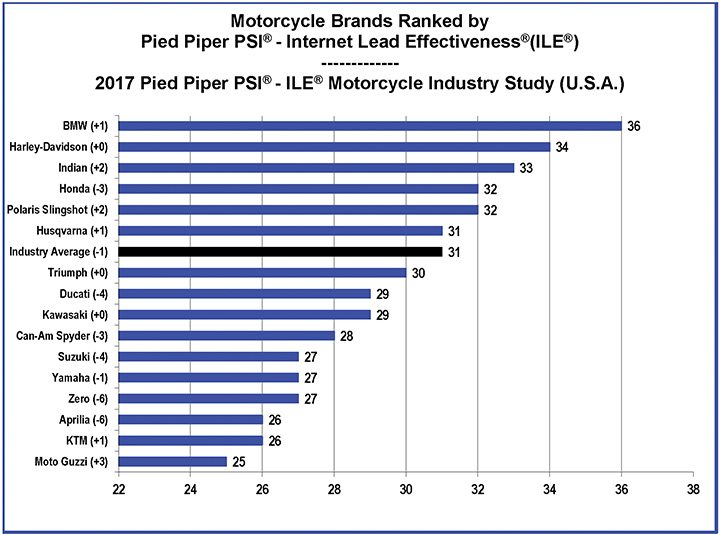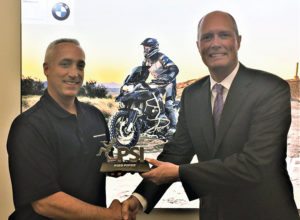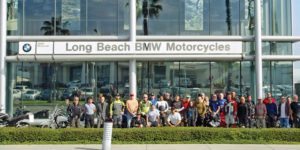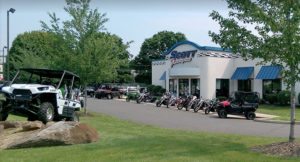Exhaustive web leads study released
Pied Piper: BMW dealers have best responses to web leads
The good news? A recent study shows that U.S. motorcycle dealerships responded to customer web inquiries within 24 hours 91 percent of the time in 2017. Back in 2013 that same measurement was 72 percent of the time, and in 2008 it was only 30 percent of the time. However, less good news is the fact that about half of the time, today’s motorcycle customers receive only an automated response acknowledging their inquiry, and then receive no further contact from the dealership.
For the past 10 years, Monterey, California-based consultancy Pied Piper has provided Prospect Satisfaction Index (PSI) industry studies to measure how effectively each street-legal motorcycle brand’s dealers sell in-person. More recently, Pied Piper has also measured how effectively each brand’s dealers respond to customer inquiries received through dealership websites. For its 2017 study measuring web response, Pied Piper sent customer inquiries through the individual websites of 2,197 motorcycle dealerships, then evaluated how the dealerships responded over the next 24 hours.
According to the study, dealers selling BMW finished at the top of the industry, with a score of 36. However, the maximum PSI-ILE score is 100, so while a 36 puts BMW at the top of the motorcycle industry, it also shows how much room remains for improvement. Pied Piper tells us that about one in six dealerships nationwide scores 60 or higher, but more than half of the motorcycle dealerships score below 25. Harley-Davidson and Indian dealers completed the top-three scoring brands, while Moto Guzzi, KTM and Aprilia were the three lowest scoring brands.

The study showed large differences between brands for some sales behaviors. For example, BMW dealerships answered a customer’s specific question more than 50 percent of the time on average, while dealerships selling Suzuki, Can-Am and Aprilia answered customer questions less than 30 percent of the time. Harley-Davidson and Indian dealerships attempted to telephone web customers more than 50 percent of the time, while Moto Guzzi, Ducati, Husqvarna and Can-Am dealerships attempted a phone call less than 25 percent of the time.
Dealers who have figured out this part of the business say all that it took to improve was paying attention to their processes. Michael Scott owns Scott Powersports near Allentown, Pennsylvania. The store sells Yamaha, Kawasaki, Honda and KTM, and earns PSI-ILE scores in the 60s. Scott says that in the past his dealership was as guilty as everyone else at sending out CRM auto-responder emails and then not following up. That changed when he and his team committed to responding personally to every lead every day, and tracking their performance.
“Someone measuring it and reporting back was the key. Plus, we discovered that (CRM) system problems were the issue as much as salespeople not doing their job,” said Scott.
When asked for simple ideas to use to improve web responses, Pied Piper CEO Fran O’Hagan, suggested first reviewing the auto-response template used by a dealership’s CRM system.
“We have found that almost one-third of motorcycle auto-responses fail to mention the name of the dealership, or any other contact information,” he said.
These auto-responder messages are critical to the motorcycle industry since about half of today’s motorcycle shoppers receive only an automated response and no other contact. Ideally, O’Hagan suggests customizing the auto-response template to share unique reasons why a customer should visit the dealership, calling it a “print ad to sell the dealership.”
O’Hagan’s second suggestion was: “Don’t leave the dealership at the end of the day with customers locked-up inside your store, even if they are web customers. Someone at the dealership must take responsibility for responding personally to customer web inquiries at least once each day.”
What is the upside from improving the way customer web inquiries are handled? Online is where the new customers are. Charles Berthon is the general manager of Long Beach BMW Motorcycles in California. His store also achieves PSI-ILE scores in the 60s.
According to Berthon, 20 to 30 percent of his new customers first contact his dealership online.
“The motorcycle business has changed, and the industry is slow to embrace change,” Berthon said. “We were used to waiting for a guy to walk through the front door, and we just can’t count on that anymore.”











